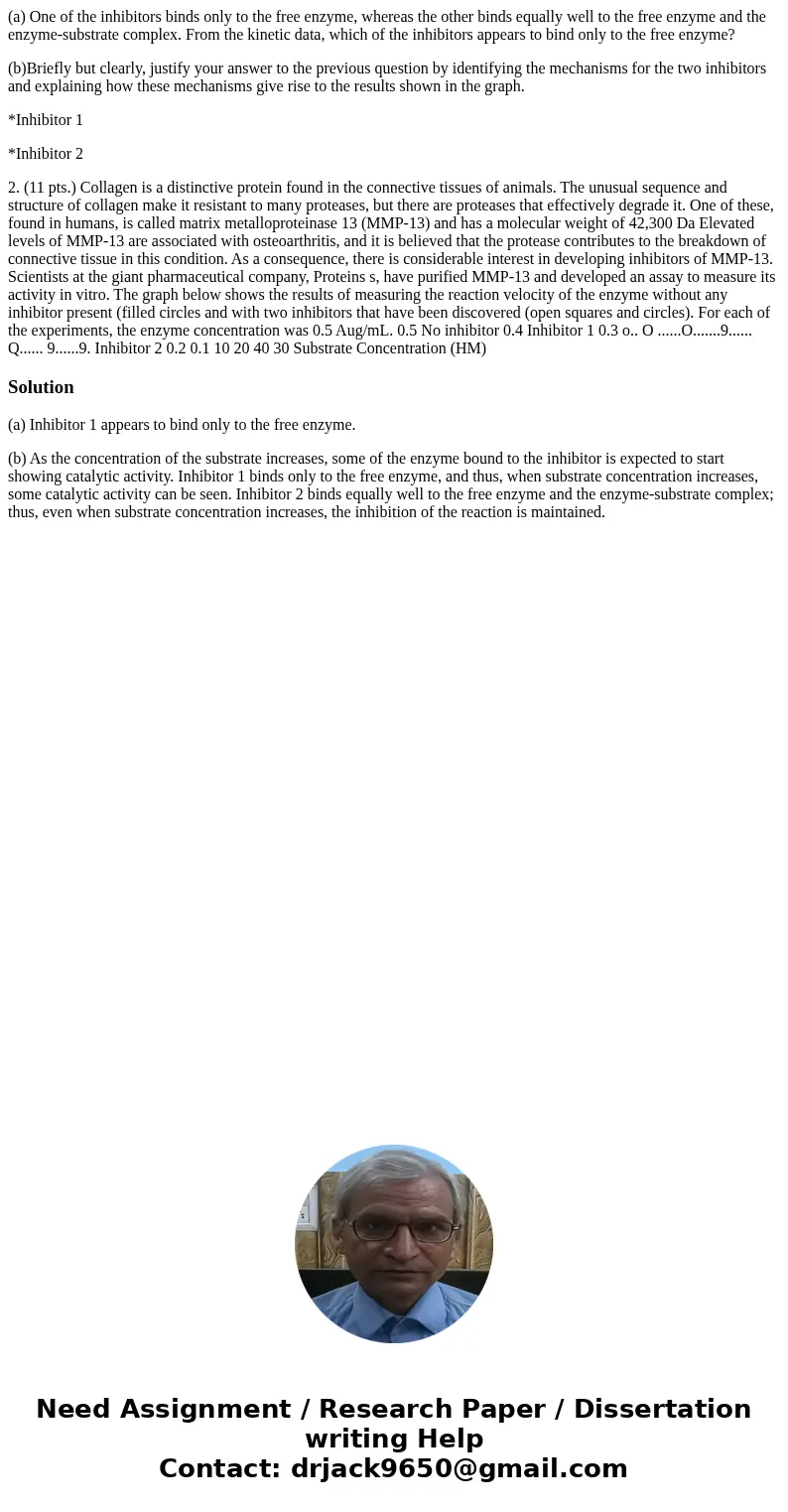a One of the inhibitors binds only to the free enzyme wherea
(a) One of the inhibitors binds only to the free enzyme, whereas the other binds equally well to the free enzyme and the enzyme-substrate complex. From the kinetic data, which of the inhibitors appears to bind only to the free enzyme?
(b)Briefly but clearly, justify your answer to the previous question by identifying the mechanisms for the two inhibitors and explaining how these mechanisms give rise to the results shown in the graph.
*Inhibitor 1
*Inhibitor 2
2. (11 pts.) Collagen is a distinctive protein found in the connective tissues of animals. The unusual sequence and structure of collagen make it resistant to many proteases, but there are proteases that effectively degrade it. One of these, found in humans, is called matrix metalloproteinase 13 (MMP-13) and has a molecular weight of 42,300 Da Elevated levels of MMP-13 are associated with osteoarthritis, and it is believed that the protease contributes to the breakdown of connective tissue in this condition. As a consequence, there is considerable interest in developing inhibitors of MMP-13. Scientists at the giant pharmaceutical company, Proteins s, have purified MMP-13 and developed an assay to measure its activity in vitro. The graph below shows the results of measuring the reaction velocity of the enzyme without any inhibitor present (filled circles and with two inhibitors that have been discovered (open squares and circles). For each of the experiments, the enzyme concentration was 0.5 Aug/mL. 0.5 No inhibitor 0.4 Inhibitor 1 0.3 o.. O ......O.......9...... Q...... 9......9. Inhibitor 2 0.2 0.1 10 20 40 30 Substrate Concentration (HM)Solution
(a) Inhibitor 1 appears to bind only to the free enzyme.
(b) As the concentration of the substrate increases, some of the enzyme bound to the inhibitor is expected to start showing catalytic activity. Inhibitor 1 binds only to the free enzyme, and thus, when substrate concentration increases, some catalytic activity can be seen. Inhibitor 2 binds equally well to the free enzyme and the enzyme-substrate complex; thus, even when substrate concentration increases, the inhibition of the reaction is maintained.

 Homework Sourse
Homework Sourse